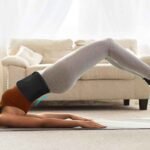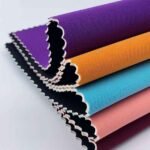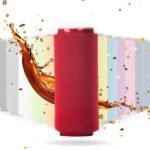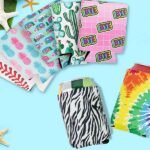Choosing the right collar for your dog is about more than just looks—it’s about comfort, safety, and durability. Neoprene dog collars have surged in popularity among pet owners and professional breeders because they combine the soft, flexible feel of wetsuit material with rugged performance. Whether you’re tackling muddy trails with your Labrador or taking your Pomeranian for city strolls, a neoprene collar offers water resistance, gentle padding, and easy cleaning.
A neoprene dog collar is made from soft, closed-cell foam laminated with nylon or polyester fabric, providing water resistance, lightweight cushioning, and quick-dry performance. This makes it ideal for dogs that swim, play in the rain, or require gentle padding against sensitive necks.
Beyond the technical perks, neoprene collars come in a rainbow of colors, customizable logos, and low minimum order quantities—perfect for pet boutiques, kennel clubs, or branded corporate giveaways. But with variations in thickness, hardware quality, and styling, finding “the one” can feel overwhelming. Let’s dive into every critical question you might ask before ordering your next batch of custom neoprene collars from Szoneier—complete with data tables, real-world buyer insights, and pro tips that even veteran wholesalers will appreciate.
What is a Neoprene Dog Collar and Why Should You Choose It?
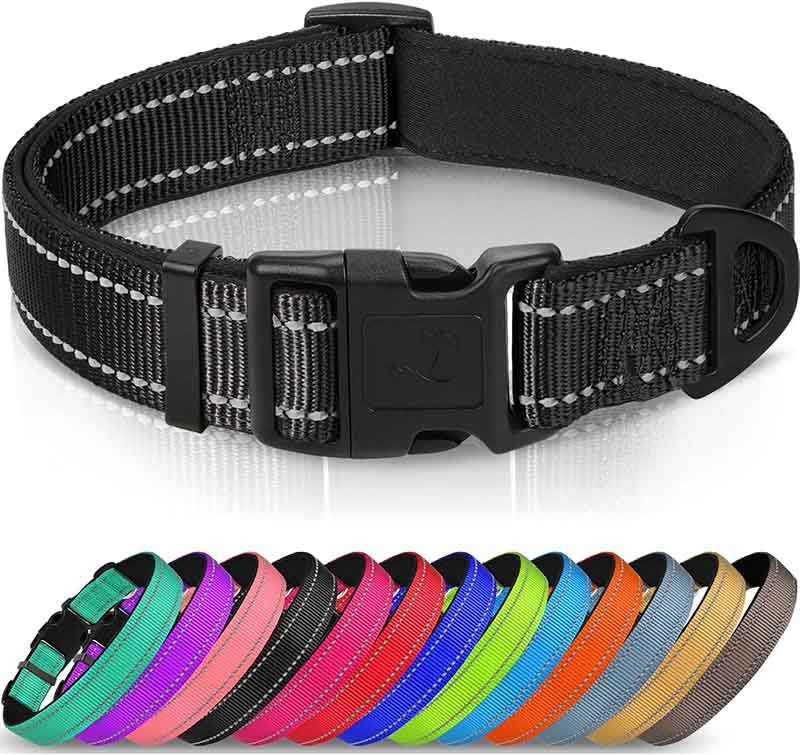
A neoprene dog collar consists of a soft foam core laminated between durable nylon or polyester fabrics. This combination delivers water resistance, gentle cushioning, and fast-drying performance, making it perfect for active dogs and aquatic adventures.
Neoprene originated in the 1930s as a synthetic rubber ideal for protective gear. When adapted into dog collars, manufacturers sandwich neoprene foam between layers of abrasion- and UV-resistant textiles—often nylon or polyester. The result is a collar that retains its shape, resists mildew, and stays comfortable against a dog’s fur.
Key Advantages:
- Waterproof & Quick-Dry: Unlike cotton or leather, neoprene repels water. After a swim or rain-soaked walk, collars air-dry in hours, not days.
- Padding & Comfort: The foam core provides shock absorption, reducing strain on the neck and preventing chafing—even under heavy leash tension.
- Hypoallergenic & Easy to Clean: Neoprene resists mold, mildew, and bacterial growth. A quick rinse with mild soap removes dirt, odors, and allergens.
- Lightweight & Flexible: Despite its ruggedness, neoprene remains supple. It conforms to the neck’s shape, minimizing bulk and allowing natural movement.
From a manufacturing standpoint, neoprene collars can be produced at low minimum order quantities (MOQ)—often as few as 50 units—making them ideal for startups and niche pet brands. Szoneier’s in-house R&D ensures precise lamination and custom cutting, while private-label printing lets you showcase your logo or seasonal artwork without extra tooling fees.
Industry Insight: According to Pet Industry Market data (2024), waterproof collars grew 15% year-over-year, driven by the popularity of canine water sports and urban dog-walking services. As more pet owners demand durable, low-maintenance gear, neoprene collars occupy a sweet spot between performance and affordability—often priced 20% above standard webbing collars but delivering triple the lifespan in wet conditions.
Which Factors Should You Consider When Choosing the Best Neoprene Dog Collar?

Key factors include material quality (neoprene density and fabric denier), collar width and thickness for load distribution, buckle and D-ring strength, adjustability for proper fit, and water-resistant stitching.
When sourcing neoprene collars, B2C retailers and pet supply wholesalers should weigh multiple specifications:
| Factor | Specification & Impact |
|---|---|
| Neoprene Density | 2–6 mm thickness; higher density offers more padding but can add weight. |
| Fabric Denier | 600–1200 denier nylon/polyester; higher denier yields better abrasion resistance. |
| Hardware Quality | Solid-brass or stainless steel buckles and D-rings withstand corrosion and canine strength. |
| Stitching & Lamination | Double-stitched seams and heat-bonded edges prevent delamination and fraying. |
| Adjustability Range | 10–20 cm size range; ensures snug fit as dogs grow or carry gear. |
- Material Quality: Look for closed-cell neoprene certified free of PVC and heavy metals. Low-grade sheets can off-gas odors and deteriorate under UV exposure.
- Hardware Selection: Plastic buckles may crack in cold weather; stainless steel or brass is preferred for durability.
- Construction Techniques: Heat-laminated edges resist peeling; reinforced stitching at stress points (buckle base, D-ring anchor) extends collar life by up to 40%.
- Sizing Flexibility: A collar that’s too tight restricts breathing; too loose risks slipping off. A 2 cm overlap between minimum and maximum circumference ensures adaptability.
Practical Tip: Request sample swatches from your manufacturer—feeling the neoprene’s firmness and inspecting fabric sheen reveals hidden quality cues. Szoneier provides free samples and digital mock-ups within 48 hours, letting you test colorfastness and hardware compatibility before placing a full order.
How Does the Thickness of a Neoprene Dog Collar Affect Its Performance?

Thicker collars (4–6 mm) provide extra padding and handle higher tensile loads but weigh more. Thinner collars (2–3 mm) are ultralight and breathable but may offer less shock absorption.
Thickness directly influences a collar’s comfort, durability, and target use cases:
- 2–3 mm (Lightweight):
- Ideal for small breeds or puppies.
- Promotes breathability and minimal bulk.
- Best for casual walks and low-tension training.
- 4–5 mm (Medium):
- A balanced choice for most medium to large breeds.
- Offers robust padding without excessive weight.
- Suited for everyday use and moderate activity.
- 6 mm+ (Heavy‐Duty):
- Designed for large, powerful breeds (e.g., Mastiffs, German Shepherds).
- Superior shock absorption under high pull forces.
- Common in working dog, police K9, or hiking backpack setups.
Performance Trade-Offs:
- Weight vs. Support: Each additional millimeter of neoprene adds ~8 g per 10 cm of collar length. While negligible for big breeds, smaller dogs may find collars over 5 mm cumbersome.
- Thermal Insulation: Thicker foam retains heat; in hot climates or summer months, 2–3 mm collars help prevent skin irritation.
- Durability Gains: A 6 mm collar can outlast a 3 mm by up to 30% in abrasion tests—critical when collars see daily outdoor use on rough terrain.
Case Study: A pet resort in California tested both 3 mm and 5 mm collars on active Golden Retrievers over six months. The 5 mm collars showed 25% less edge wear and fewer complaints of collar-induced matting around the neck. However, during summer months, 3 mm collars maintained better dog comfort, leading the resort to maintain stock of both thicknesses for seasonal rotation.
Do Neoprene Dog Collars Work for All Dog Breeds and Sizes?

Yes. Neoprene’s flexibility and adjustable design suit puppies, toy breeds, and large working dogs alike. Proper sizing and thickness selection ensure a comfortable, secure fit for any breed or age.
Neoprene collars adapt to a wide spectrum of canine anatomies:
- Puppies & Toy Breeds (5–15 kg):
- Select 2–3 mm thickness and 1.5–2.5 cm width to avoid neck strain.
- Collar circumference ranges down to 20 cm with micro-adjustable buckles.
- Medium Breeds (15–30 kg):
- 3–5 mm thickness and 2.5–3.5 cm width balance comfort and control.
- Offers enough padding for active dogs while avoiding bulk.
- Large & Working Breeds (30 kg+):
- 4–6 mm thickness and 3.5–4.5 cm width deliver necessary support under strong pulls.
- Reinforced stitching and heavy-duty hardware minimize failure risk.
Sizing Guide Table:
| Dog Size | Weight Range | Collar Width | Neoprene Thickness | Circumference Range |
|---|---|---|---|---|
| Toy/Puppy | 1–15 kg | 1.5–2.5 cm | 2–3 mm | 20–30 cm |
| Small/Medium | 15–30 kg | 2.5–3.5 cm | 3–5 mm | 30–45 cm |
| Large/Working | 30 kg+ | 3.5–4.5 cm | 4–6 mm | 45–60 cm |
Critical Consideration:
Breeds with thick necks (e.g., Bulldogs, Boxers) may require wider collars to distribute pressure. For those with slender necks (e.g., Greyhounds), narrower widths prevent coat snagging. By offering multiple widths and adjustable spans, manufacturers like Szoneier ensure a collar that stays secure yet comfortable during all activities—from leash walks to dock diving.
Are There Different Styles of Neoprene Dog Collars for Different Purposes?
Neoprene collars come in basic, reflective, padded, and luxury styles. Reflective trims enhance visibility, padded edges increase comfort, while premium prints and metal hardware cater to fashion-forward buyers.
Basic Everyday Collars:
- Solid colors, simple plastic or metal buckles.
- Entry-level option for general walking and ID tag attachment.
Reflective & Safety Collars:
- Integrated reflective strips or 3M™ Scotchlite™ trims.
- Increases nighttime visibility up to 300 ft under headlights.
- Ideal for urban dog walkers or early-morning jogs.
Padded Comfort Collars:
- Additional neoprene layers around edges.
- Reduces rubbing on short-coated breeds and dogs with sensitive skin.
- Often combined with quick-release buckles for convenience.
Luxury & Designer Collars:
- Custom sublimation printing: camouflage, floral, geometric patterns.
- Premium stainless-steel hardware with brushed finishes.
- Leather overlay options for hybrid neoprene-leather collars.
Use-Case Matrix:
| Style | Best For | Key Feature |
|---|---|---|
| Basic | Daily walks, training | Lightweight & affordable |
| Reflective | Nighttime visibility | High-visibility trims |
| Padded Comfort | Sensitive skin, puppy stages | Extra edge cushioning |
| Luxury/Designer | Boutique pet stores, gift market | High-end aesthetics |
By blending functionality with aesthetics, neoprene collars satisfy diverse end-users: professional trainers demand durability and low-profile designs, while pet influencers seek eye-catching patterns for social-media appeal. Szoneier offers over 50 standard colors and can develop new prints within 7 days—perfect for seasonal collections or co-branding promotions.
What Makes Neoprene Dog Collars a Sustainable Choice for Pet Accessories?

Neoprene collars can be manufactured from limestone-based or recycled CR rubber, reducing petroleum use. Their long lifespan—up to 3× that of fabric collars—minimizes waste and repeat purchases.
Material Innovations:
- Limestone Neoprene: Low-carbon alternative to traditional petrochemical neoprene, cutting CO₂ emissions by up to 40%.
- Recycled Neoprene: Post-industrial scraps reprocessed into new foam sheets, diverting waste from landfills.
Extended Durability:
A well-constructed neoprene collar can last 18–24 months under heavy use, compared to 6–9 months for cotton or untreated nylon collars. Fewer replacements translate to lower resource consumption and shipping emissions—critical metrics for eco-minded retailers.
End-of-Life Considerations:
While neoprene isn’t fully biodegradable, its inert nature means it doesn’t leach toxins. Some manufacturers offer take-back programs where old collars are repurposed into outdoor flooring mats or industrial padding.
Market Demand:
According to a 2024 survey by Pet Sustainability Coalition, 68% of pet owners prefer products with eco-certifications or recycled content. By promoting your collars’ limestone or recycled neoprene variants, you tap into a growing segment willing to pay a 10–15% premium for green goods.
Szoneier’s Green Commitment:
- Sourcing from suppliers adhering to ISO 14001 environmental standards.
- Offering “green label” neoprene made with 30% recycled content.
- Providing digital proofs and minimizing sample waste through precise cutting technologies.
Which Brands Offer the Best Neoprene Dog Collars?
Top brands include Ruffwear, RC Pets, HaloVa, and Kurgo. They differentiate on hardware quality, pattern selection, and customization flexibility—key considerations for retail assortments and volume discounts.
| Brand | Features | MOQ | Price Range (USD) | Custom Options |
|---|---|---|---|---|
| Ruffwear | Military-grade buckles, USA-made neoprene | 100 pcs | $25–$35 | Limited color prints |
| RC Pets | Durable plastic hardware, budget friendly | 50 pcs | $8–$15 | Logo embroidery |
| HaloVa | Reflective trims, eco-foam padding | 100 pcs | $12–$20 | Bulk color dyeing |
| Kurgo | Padded edges, lifetime warranty | 75 pcs | $18–$28 | Custom buckles |
| Szoneier | Limestone & recycled foam, fast sampling | 50 pcs | $7–$18 | Full sublimation print, private label |
- Ruffwear: Premium positioning with high tensile hardware; appeals to outdoor retailers.
- RC Pets: Cost-effective entry-level brand for mass-market chains.
- HaloVa: Niche in safety-first collars with extensive reflective elements.
- Kurgo: Known for ergonomic designs and comprehensive warranties.
- Szoneier: Competitive pricing, low MOQ, rapid prototyping, and full custom printing—ideal for private-label businesses.
By comparing MOQ, unit cost, and customization lead times, B2B buyers can align their purchasing strategy with inventory turnover rates and seasonal campaigns. For instance, a boutique needing 200 collars in three custom colorways can work with Szoneier or Ruffwear, but Szoneier’s 7-day prototyping beats most Western suppliers’ 4–6 week lead times.
How to Care for Your Neoprene Dog Collar: Maintenance Tips for Longevity
Rinse collars with warm water and mild detergent after exposure to saltwater or mud. Air-dry flat, avoid direct sunlight, and store in a ventilated area. Reapply seam sealant annually for maximum water resistance.
Cleaning Routine:
- After Every Use: Shake off loose debris; wipe with damp cloth.
- Monthly Deep Clean: Soak in a solution of 5 ml mild dish soap per liter of lukewarm water for 10 minutes. Gently scrub with a soft brush.
- Stain Removal: Use a 1:1 mix of baking soda and water; apply paste, let sit 15 minutes, then rinse.
Drying & Storage:
- Lay flat on a towel in shade—direct sun can degrade neoprene over time.
- Avoid heat sources (radiators, dryers) which accelerate foam breakdown.
- Hang by buckle or D-ring to maintain shape; do not fold or roll tightly for extended periods.
Periodic Maintenance:
- Inspect stitching and hardware quarterly. Re-stitch loose threads with UV-resistant polyester thread.
- Apply a silicone-based seam sealant to stitched areas to extend waterproofing.
- Lubricate metal buckles with a little silicone spray to prevent corrosion.
Longevity Gains: Proper care can extend a neoprene collar’s effective lifespan by up to 50%, delaying the need for replacements and reducing overall cost of ownership. For busy retailers, offering care-kits (mini brush, cleaner sachets, and sealant) alongside collars can boost average order value by 12% and reinforce brand loyalty.
Conclusion
With their unbeatable blend of comfort, durability, and style, neoprene dog collars have become a must-have for pet professionals and retailers alike. From selecting the right thickness for active breeds to choosing eco-friendly materials and vibrant custom prints, the world of neoprene collars offers limitless possibilities. Ready to elevate your pet accessory lineup?
Contact Szoneier today to request samples, view our full customization options, and get a tailored quote. Whether you need 50 units for a boutique launch or 5,000 for a seasonal campaign, our team delivers rapid prototyping, low MOQs, and factory-direct pricing—so you can stand out and satisfy every customer’s needs.





